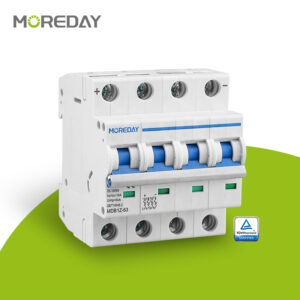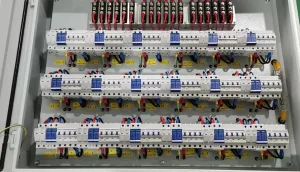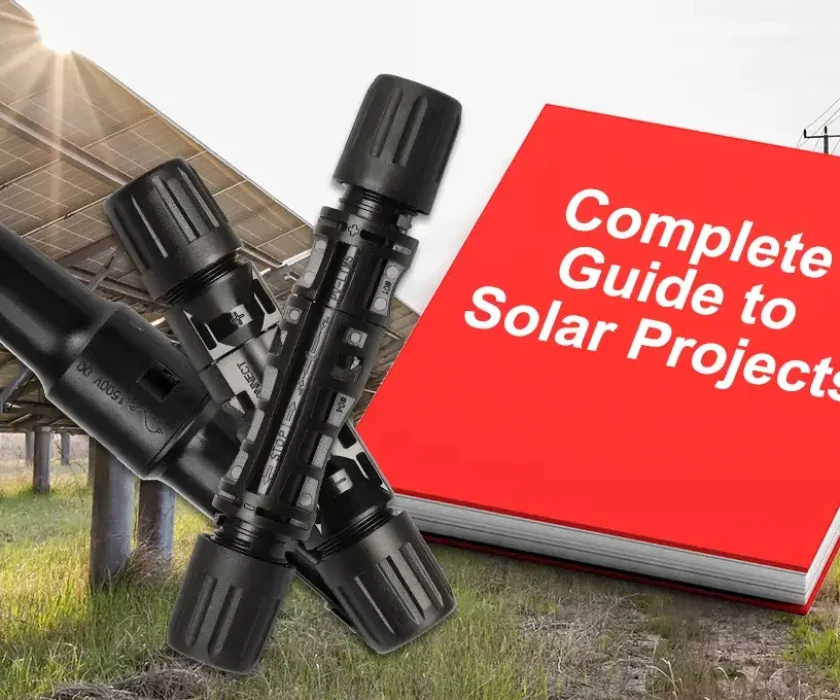When I first started working in electrical engineering, I often heard debates about AC and DC circuit breakers. At first, they seemed similar, but I quickly realized they have key differences that impact their applications. If you’re trying to choose the right breaker for your system, understanding these differences is crucial.
AC circuit breakers are designed for alternating current systems, while DC circuit breakers handle direct current. The main difference lies in how they extinguish arcs, as DC arcs are harder to break. AC breakers rely on the natural zero-crossing of AC voltage, whereas DC breakers need specialized mechanisms to interrupt the current flow.
Choosing the right breaker depends on your system’s voltage, current type, and application. Let’s dive deeper into each type and their key differences.
What is an AC Circuit Breaker and How Does It Work?
In my early days of working with power systems, I assumed all breakers worked the same way. But AC breakers have unique characteristics that make them effective in alternating current circuits.
An AC circuit breaker interrupts current flow in alternating current systems. Since AC voltage naturally drops to zero multiple times per cycle, the breaker can easily extinguish arcs. These breakers use air, vacuum, oil, or SF6 gas to enhance arc suppression and prevent system damage.


AC circuit breakers work by using the natural properties of alternating current. Since AC changes direction periodically, the current reaches zero twice in every cycle. This zero-crossing point makes it easier for the breaker to stop the flow of electricity without sustaining an arc.
When the breaker trips, the contacts separate, and an arc forms between them. However, because AC voltage crosses zero frequently, the arc weakens naturally and extinguishes faster. The breaker may also use additional methods, such as air gaps, oil immersion, or gas insulation, to help quench the arc more effectively.
Common Types of AC Circuit Breakers
| Type | Mechanism | Common Application |
|---|---|---|
| Air Circuit Breaker (ACB) | Uses compressed air to extinguish the arc | Industrial and commercial buildings |
| Vacuum Circuit Breaker (VCB) | Uses a vacuum to quench the arc | High-voltage applications |
| Oil Circuit Breaker (OCB) | Uses oil as an arc-extinguishing medium | Power grids and substations |
| SF6 Circuit Breaker | Uses sulfur hexafluoride gas to suppress arcs | High-voltage transmission lines |
These breakers are widely used in homes, businesses, and power distribution systems due to their reliability and ease of arc suppression.
What is a DC Circuit Breaker and Why Is It Different?
When I first worked with solar power systems, I noticed that standard AC breakers failed in DC circuits. That’s because DC breakers need to handle continuous current with no natural zero-crossing.
A DC circuit breaker interrupts current in direct current systems. Unlike AC, DC flows in one direction continuously, meaning there is no zero-crossing point to help extinguish arcs. To overcome this, DC breakers use magnetic blowout coils, arc chutes, or other mechanisms to force arc extinction.
Why DC Circuit Breakers Need Special Design
DC circuits are more challenging to interrupt because the voltage remains constant. When a circuit breaker trips, the arc that forms does not naturally weaken as it does in AC systems. Without a proper extinguishing mechanism, the arc could sustain itself indefinitely, leading to equipment failure or fire.
To combat this, DC breakers often include magnetic blowout coils, which create a strong magnetic field to stretch and cool the arc, forcing it to break. Some also use arc chutes, which split the arc into smaller segments, making it easier to extinguish.
Common Types of DC Circuit Breakers
| Type | Mechanism | Common Application |
|---|---|---|
| Thermal Magnetic Breaker | Uses bimetallic strips and electromagnets | Low-voltage DC circuits |
| Magnetic Blowout Breaker | Uses magnetic fields to lengthen and extinguish the arc | High-current DC applications |
| Hybrid DC Breaker | Combines mechanical and electronic switching | High-voltage DC (HVDC) transmission |
These breakers are commonly used in solar power systems, electric vehicles, and battery storage systems, where DC power is dominant.
How Do AC and DC Breakers Handle Arc Extinguishing?
When I first saw a circuit breaker trip under high load, I was shocked by the bright arc it produced. The way breakers handle this arc differs between AC and DC.
AC breakers rely on natural zero-crossing to extinguish arcs, while DC breakers must use external mechanisms like blowout coils, arc chutes, and forced cooling to break the arc. This makes DC breakers more complex and expensive.
Comparing Arc Extinguishing in AC and DC Breakers
| Feature | AC Breaker | DC Breaker |
|---|---|---|
| Arc Extinguishing Method | Zero-crossing helps naturally quench the arc | Requires external arc suppression methods |
| Arc Duration | Shorter due to zero-crossing | Longer and harder to extinguish |
| Complexity | Simpler design | More complex due to arc control |
| Cost | Generally lower | Higher due to additional components |
This fundamental difference in arc suppression makes DC breakers more robust and expensive compared to their AC counterparts.
Which Circuit Breaker Is Best for Your Electrical System?
When choosing between AC and DC breakers, I always consider the type of current in the system and the risk of sustained arcing.
If your system uses alternating current (like household wiring or commercial power grids), an AC breaker is sufficient. If your system uses direct current (like solar panels, EVs, or batteries), you need a DC breaker designed to handle continuous current without zero-crossing.
Factors to Consider When Selecting a Circuit Breaker
| Factor | AC Breaker | DC Breaker |
|---|---|---|
| Current Type | Alternating Current (AC) | Direct Current (DC) |
| Arc Extinguishing | Uses zero-crossing | Requires additional mechanisms |
| Cost | Lower | Higher |
| Application | Home, office, industrial power systems | Solar panels, batteries, EVs |
If you’re working on a renewable energy project or any system with batteries, a DC breaker is the right choice. For household or industrial power distribution, an AC breaker will work just fine.
Conclusion
Understanding the differences between AC and DC circuit breakers is essential for choosing the right protection for your electrical system. AC breakers use the natural zero-crossing of alternating current to stop arcs, while DC breakers need advanced arc suppression methods. The right choice depends on your power source, voltage, and application.
AC breakers are generally cheaper and simpler, making them ideal for homes and businesses. DC breakers, though more expensive, are necessary for renewable energy systems, electric vehicles, and battery storage. Always choose the right breaker to ensure safety and efficiency in your electrical system.















